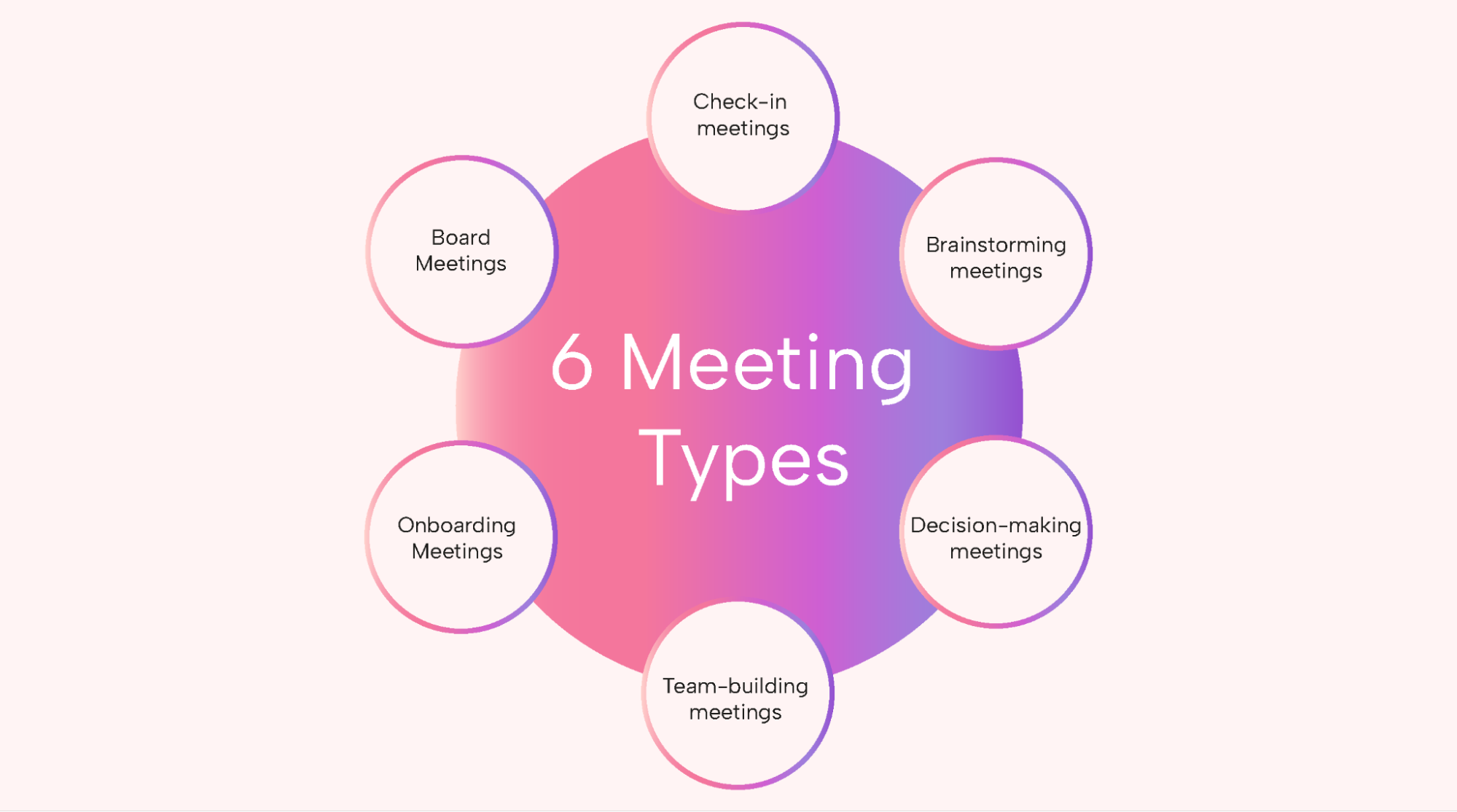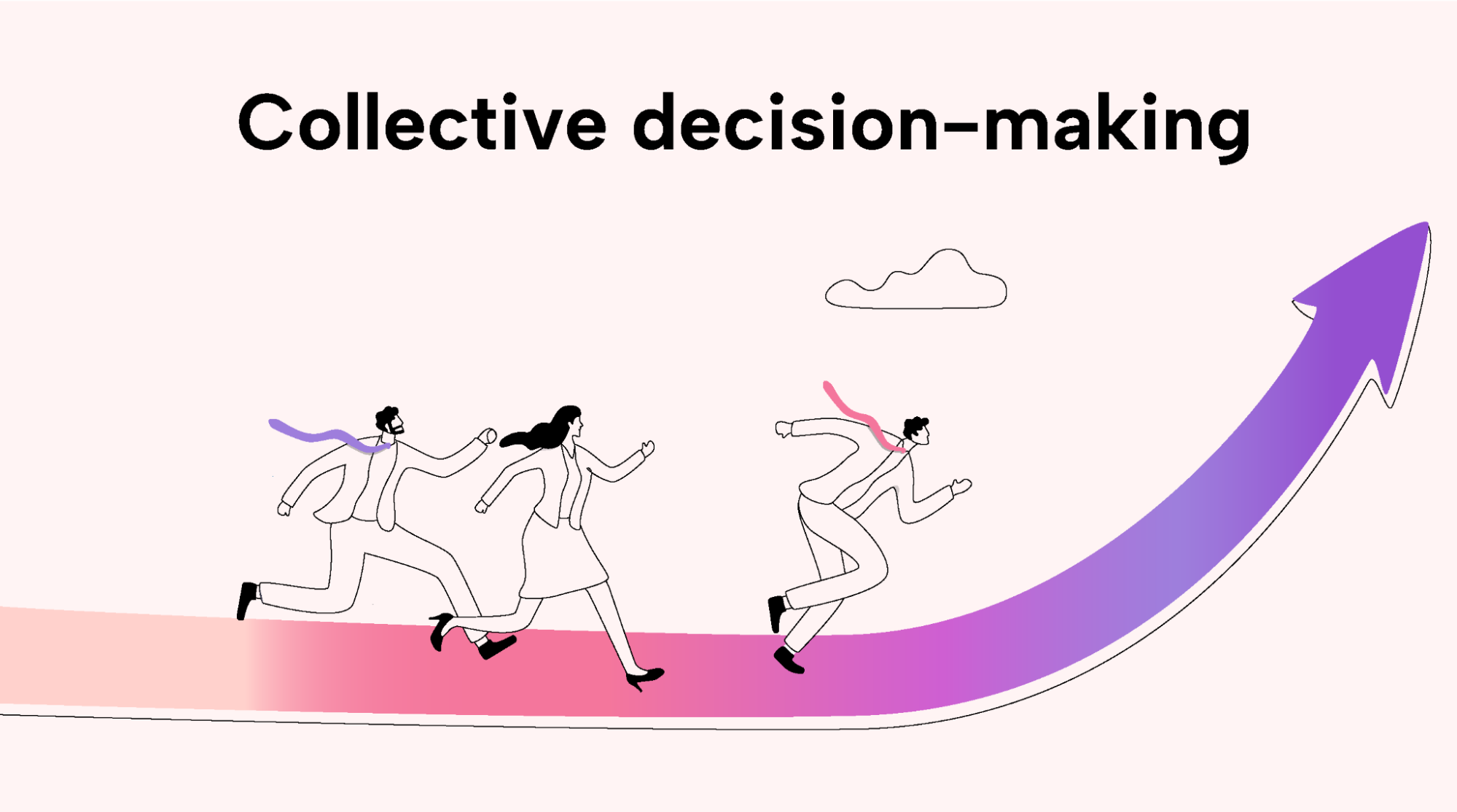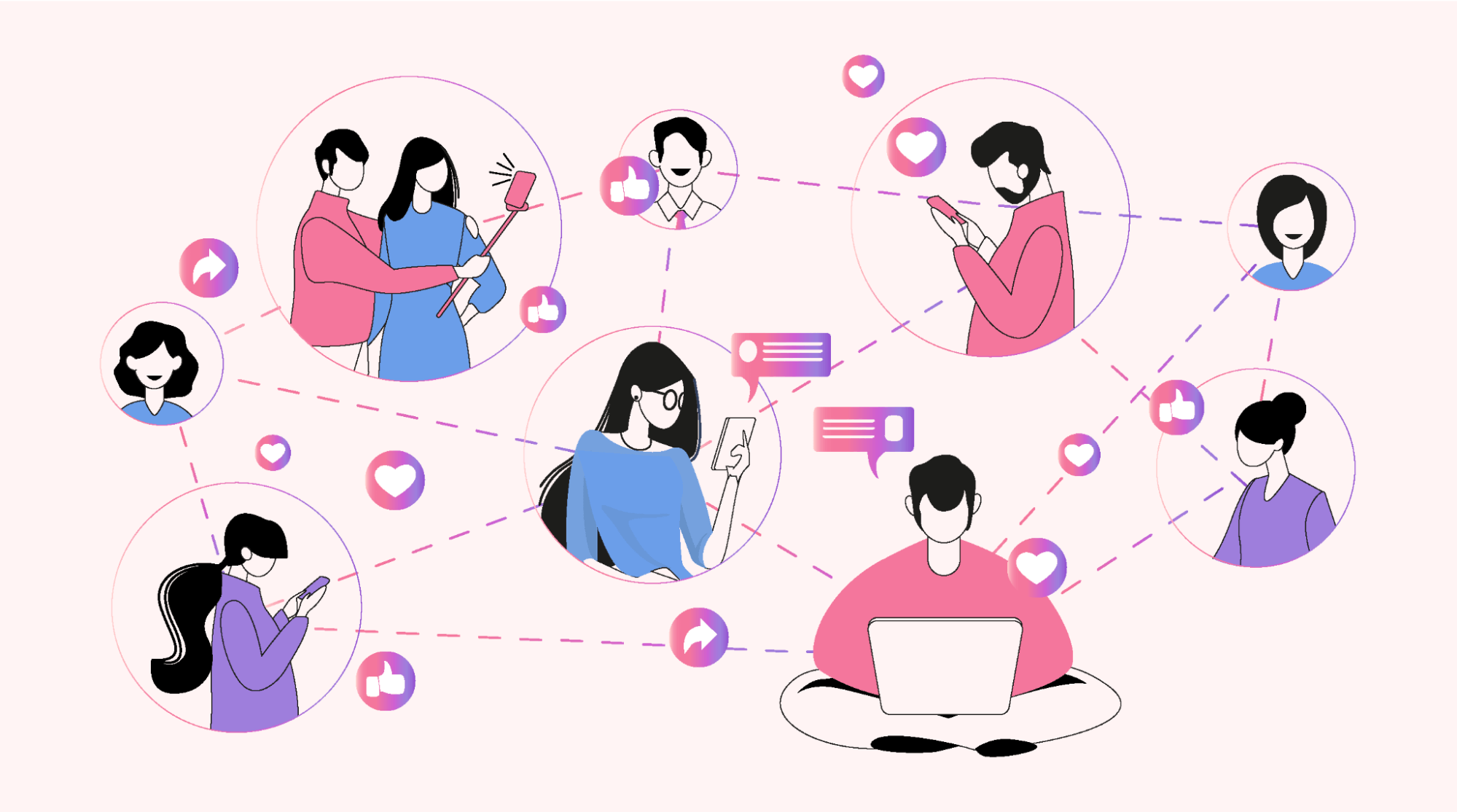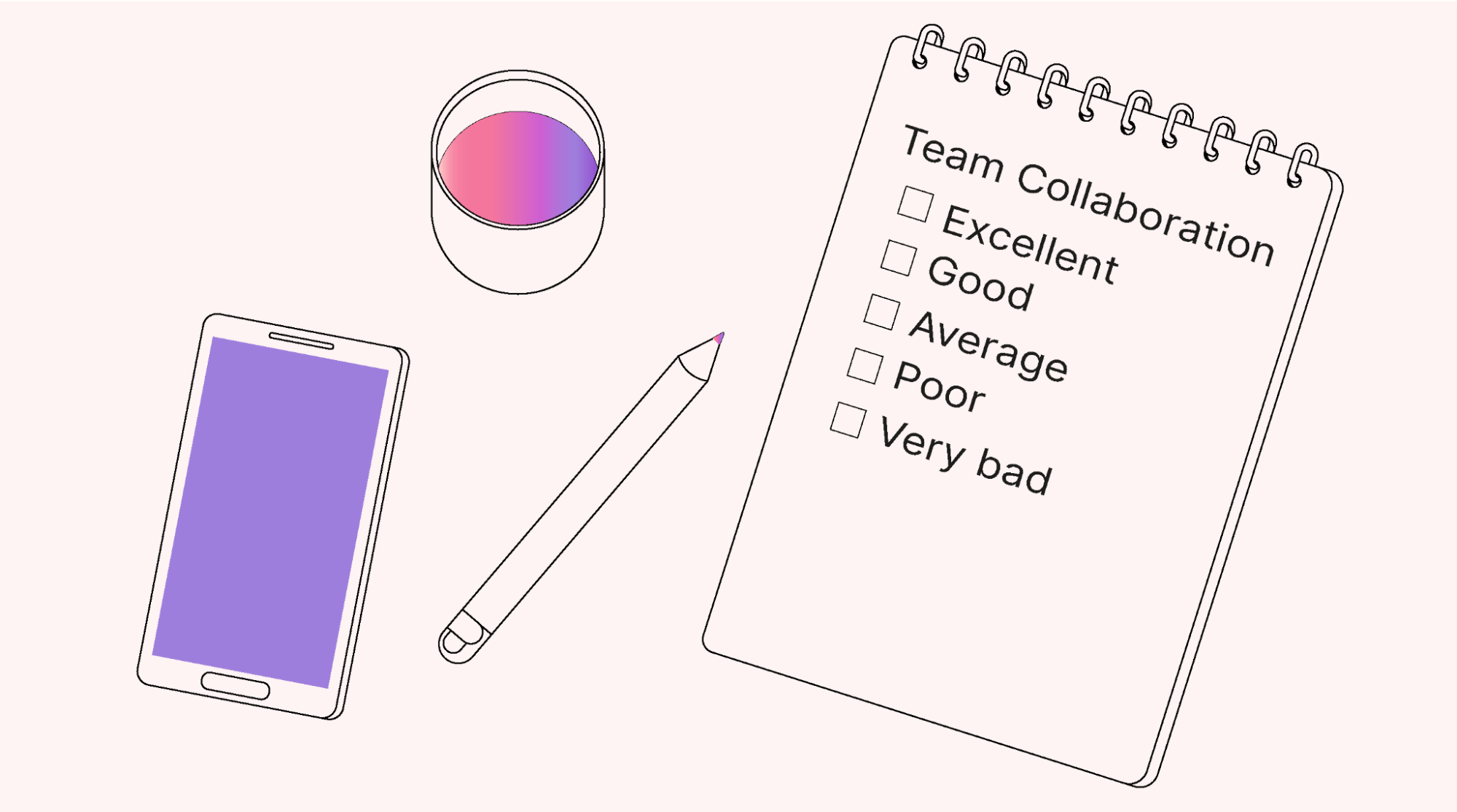Did you know businesses lose roughly $37 billion annually to unproductive meetings? Yes, you read that right. Your business may be losing money because your meetings aren't as productive as they should be.
From missed meetings to team members that ramble on and on, there's a variety of reasons your meetings may not be as productive as you'd like.
You can make your meetings more purposeful, collaborative, and productive by understanding how to plan and run each type of meeting.
In this article, we'll look at six common types of meetings and provide tips and tools for enhancing collaboration during your sessions.
What is a meeting?
A meeting is an assembly of people who come together to discuss their shared goals and plan their course of action. Meetings can fall into two groups - formal and informal. Formal meetings follow strict protocols, whereas informal ones are typically more flexible.
There are numerous debates over which is better. Senior management may lean toward formal meetings, while employees may argue for informal meetings.
Arguing whether one is better than the other is like debating whether football is better than basketball. Now, if you're from Texas, the answer may be football. But someone from LA may disagree.
 |
This is the same case with formal and informal meetings. No one can for sure say one is better than the other; they're just different, and both are vital for businesses today.
Types of meetings
Meetings are integral to business success as they allow employees to share ideas, stay updated on business activities, and solve problems. They also facilitate team building and enhance collaboration. Here are common types of formal and informal meetings.
Check-in meetings
These meetings allow teams to share project updates. They also facilitate effective project monitoring by team leaders. Monitoring is one of the critical phases in a project management lifecycle. It enables team leaders to ensure everything is going as planned and that every member is doing their tasks.
Check-in meetings can be formal or informal. Formal check-ins are company-wide and often address factors affecting an entire business. For example, quarterly performance meetings focused on assessing a company's achievements and failures.
Informal check-ins are often smaller and involve individual teams within an organization. For example, a weekly sales team meeting to compare actual sales versus target sales.
You can make check-in meetings more effective by holding regular stand-up meetings. Daily or frequent stand-up meetings allow team members to flag and solve problems before scheduled check-in meetings.
Brainstorming meetings
Brainstorming meetings are a lot like think tanks. People focus on generating ideas and solving problems. But, unlike traditional think tanks, they're more liberal and informal.
Brainstorming sessions are the most effective when team members work as co-contributors. This means you need to encourage independent thinking and create a suitable environment for idea-sharing.
Let all employees know that your sessions are judgment-free and applaud the crazy ideas. This is especially important if you're holding this type of meeting for product development. Remember, all significant innovations started as crazy ideas.
Decision-making meetings
As their name suggests, the core function of these meetings is decision-making. They follow a structured agenda and are often led by a team leader to ensure members make the necessary decisions. This makes them formal meetings.
Often, businesses make the mistake of allowing chief decision-makers to control these meetings. While their contribution is valuable, you can make these sessions more productive by allowing subject matter experts to provide their input. They may identify hurdles the chief decision-maker may not.
 |
The primary functions of decision-making meetings are to determine the best courses of action and identify team members best equipped to implement the agreed-upon plans. For this to happen, all members should be allowed to share their points of view, albeit in a more structured way than you'd typically run brainstorming sessions.
Team-building meetings
Your team members are your business' backbone. Without them, you'd have to perform every task alone. And, if we're being honest, this is impossible. Even superheroes like Batman and Wonder Woman are part of a team!
Team-building meetings allow you to enhance collaboration within your team. They help strengthen relationships among team members and can boost trust and cohesion. This can increase productivity and employee happiness, reducing turnover rates.
These meetings should be fun for everyone. Consider employees' likes, dislikes, beliefs, and abilities when deciding what to do during your meetings.
Onboarding meetings
Think of these as first dates for new hires and current employees. They allow new employees to learn about their roles, meet their colleagues, and learn about business policies. They may be formal or informal. Some businesses even hold both.
Formal onboarding meetings follow a clear structure with specific objectives. Here's an example of a structured outline for a formal onboarding meeting:
- Introduction: You introduce yourself and team members who may be present.
- Company overview: Explain your company's hierarchy, values, mission, and vision to allow new hires to understand you better.
- Roles and responsibilities: You discuss new hires' performance expectations and introduce the members they'll be reporting to.
- Company policies: Explain your company's rules.
- Benefits: You discuss salaries and benefits like health insurance.
- Conclusion: You thank new hires for making time to attend your meeting.
Informal onboarding meetings are more social than formal ones. They allow new hires to mingle with employees and interact directly with the people they'll be reporting to.
Board meetings
These are executive-level formal meetings held to share information, solve problems, and discuss business objectives. They help align senior management and the board of directors' goals.
They also allow the board of directors to review senior management's decisions. This is one of the best ways to keep top management accountable.
 |
As a small business, your board meetings may involve investors and advisors like your accountant and business attorney. You can discuss and refine your goals and strategic plans to improve your business.
Tips for running a collaborative meeting
Well-structured meetings can enhance team collaboration by facilitating effective communication and problem-solving. Excessive or poorly structured sessions can have the opposite effect. They can hinder collaboration by causing frustration among team members and slowing down decision-making.
According to a McKinsey report, 61% of executives said excessive and poorly run meetings hindered their decision-making. Here are ways you can transform your meetings to boost collaboration.
Choose a convenient time
Confirm team members' availability during your desired meeting time to ensure it's convenient for all. Choose a time every member is comfortable with to show you value them.
If you all follow the same work schedule, hold your meetings during core working hours when every team member is typically available. Avoid having meetings during personal time, like lunch breaks or after regular working hours. This may affect employees' work-life balance and hinder their willingness to participate in discussions.
If you follow different work schedules, send surveys asking employees when they'd prefer to hold the meeting. Include your desired timeframe, especially if you need to discuss an urgent matter. For example, you can ask them to indicate when they'd be the most comfortable within 72 hours.
Set an agenda
You may constantly go off-topic if you don't have an agenda. Create a plan before your meeting and share it with team members to ensure they understand what your session will entail.
Start by determining your purpose. Are you holding meetings to solve a problem, develop ideas to improve your products, or something else?
Then, list all the key topics you want to address during the meeting and allocate time for each. The latter is vital for formal meetings. If you're holding an informal meeting, focus on determining meeting topics and goals.
Encourage participation
Cultivate a supportive environment that values every member’s opinions to boost participation. The more employees participate, the more creative ideas you’ll get. You can also improve the quality of your projects.
Share your agenda well before the meeting to boost collaboration. This ensures that all attendees know what is going to be discussed. If something is missing, they can let you know before the meeting. The more prepared participants are, the likelier they are to contribute to the meeting.
Start with an icebreaker if you're holding an onboarding or team-building meeting. This is an excellent way to calm attendees' nerves and promote creativity and collaboration. Examples of good icebreakers are the One Word game and Two Truths and One Lie.
Encourage collective decision-making
Don't leave decision-making to a few people in your team. Allow members to work together to reach a consensus. This can improve the quality of your decisions.
 |
Start your meeting by emphasizing the need for collective decision-making. Make it clear that everyone will have a vote on what the team eventually settles on.
You can implement techniques like popcorn or round robin brainstorming. They allow all members to be involved in decision-making by encouraging each to suggest an idea or vote. These techniques can prevent loud individuals from taking over the meeting.
Learn from your meetings
Identify inefficiencies in your current meetings to allow you to make future adjustments. This is one of the best ways to improve your sessions continuously.
After each meeting, take time to assess how collaborative it was. Did all team members participate? Was this meeting more collaborative than previous ones? If so, what changed?
Also, solicit feedback from your team. Ask members why they think your meetings are failing and encourage them to give ideas.
Leverage technology
Technology can streamline meetings and facilitate faster decision-making. Review your technology options and choose one based on your needs.
 |
For example, you can use Motion's project management app to monitor your team's projects before scheduling meetings. This can make check-in meetings more efficient, as team members don't need to present their progress during your actual meetings.
Tools you can leverage to boost collaboration
Planning and running meetings can be daunting, especially when you're working with a large team or if you need to hold regular meetings. Fortunately, you can leverage certain tools to make your work easier and enhance collaboration. Technologies you may leverage include:
Scheduling software
Scheduling software can help you with planning. It can help you determine your team's availability at different times and remind them about upcoming meetings.
Motion's scheduling tool is everybody's dream AI executive assistant. It contains personalization features that allow users to create custom meeting booking pages. The drag-and-drop feature lets you choose your availability and set preferred meeting times. Motion then displays them to meeting invitees, allowing them to select the most convenient times to hold your meetings. This can enhance collaboration. Or let Motion’s Intelligent Calendar automatically find a time that works for all.
Document collaboration tools
These tools allow team members to work on the same document in real-time. They can be helpful in virtual meetings as they allow teams to leave comments or add suggestions to documents.
Google Docs allows members to work on the same document simultaneously. Changes made by one user are visible to others, facilitating a seamless collaborative experience. The tool also lets users leave comments and suggestions throughout a document. This can allow team members to reach a consensus on anything from ad campaign drafts to blog content.
Video conferencing tools
These facilitate virtual meetings. They're essential for businesses that employ work-from-home or hybrid models, or have remote team members. With these tools, team members can hold meetings as they typically would in office settings despite their geographical locations.
 |
Zoom is one of the widely recognized video conferencing tools. It allows users to host and join virtual meetings that mimic face-to-face sessions. Like most such software, it contains a screen-sharing feature that lets participants share their computer screens with meeting attendees. This makes it easy for remote workers to share their presentations. The tool also has a chat feature that allows users to send messages and share files. Team members can use this feature to share resources or communicate in real time without interrupting the speaker.
Polling and feedback tools
These tools can help you collect feedback from your team. You can use them to ask employees to suggest ways to improve collaboration during meetings. This way, you don't have to guess what will work and what won't. You get tips straight from your team.
SurveyMonkey is a feedback collection platform that allows you to create surveys with little to no technical expertise. The platform provides various survey templates to save users time. Just tweak whatever's already available to suit your needs.
Transcription software
Transcription software can help ensure accurate capture and documentation of meeting discussions. This can reduce the risk of miscommunication among team members.
Otter.ai is an AI-driven transcription tool that transcribes words into written text in real-time. It's valuable for remote or hybrid teams, as they can easily follow conversations throughout meetings. The tool allows you to add speaker names to conversations to distinguish speakers. Doing so enables it to identify speakers on its own in future discussions. Knowing who said what can enhance collaboration as team members will know whom to seek clarification from in case they need help after a meeting.
Improve your meetings with Motion
Meetings are vital for small businesses as they help with decision-making. They help ensure that business executives and employees are working toward achieving common goals. You can improve collaboration during meetings by planning and running your sessions appropriately.
Motion can help you with this.
Motion's Meeting Scheduler promotes efficient communication with your team. You can personalize your booking page to show your availability and share your preferred meeting times to allow you to choose the most convenient time for all. Motion will automatically find the best time on your calendar and your team's calendars to schedule meetings, so you need to tell it to do that. Think of this tool as your efficient personal assistant.
Try Motion for free to transform your meetings.






